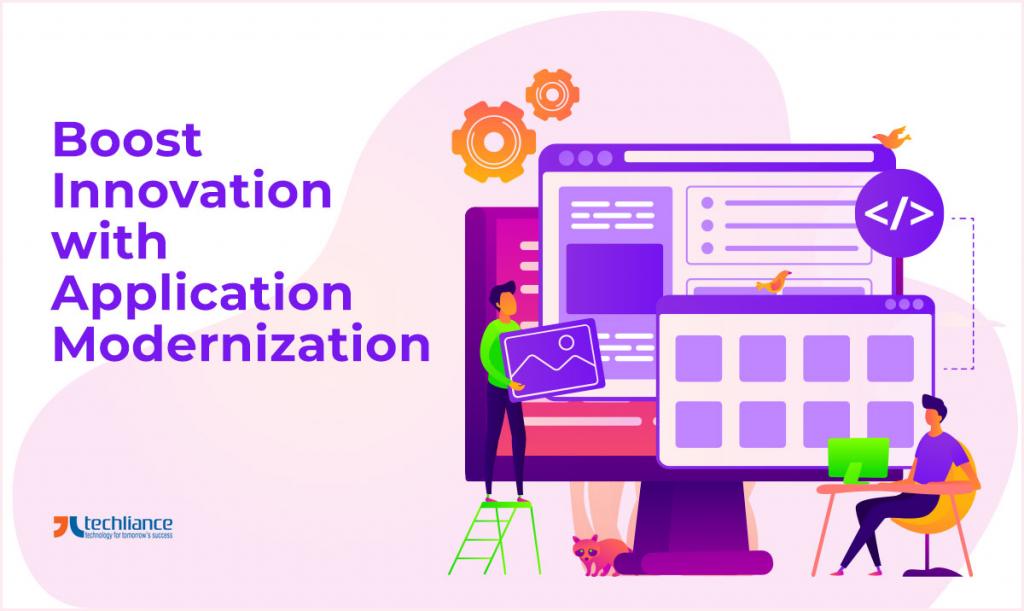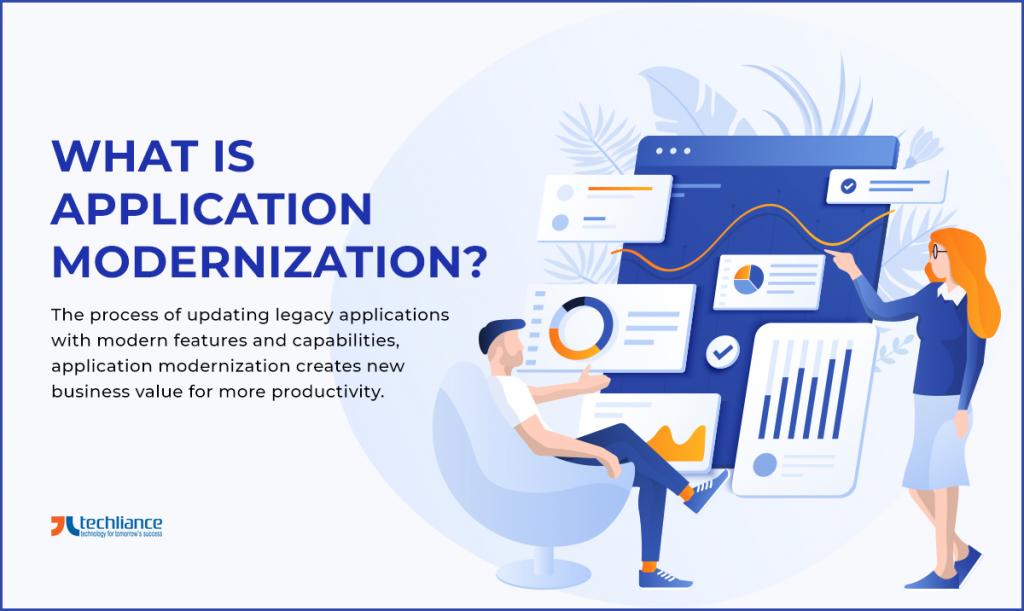Talking of 2024, application modernization is something every IT company needs to prioritize. Technology keeps growing and the digital infrastructure has many efficient tools. It is important to boost innovation with application modernization for increasing productivity.
Tech specialists worldwide improve innovation with modernized software applications to enhance productivity.
If you like to learn all the basic things you need to know about application transformation, then keep reading.
This post will give you all the facts to find out why your company needs to make room for innovation.

What is Application Modernization?
The process of updating legacy applications with modern features and capabilities, application modernization creates new business value for more productivity.
You include the latest functionalities in these applications.
Therefore, you can ensure they align better with your business needs.
If you want to get in-depth explanation of what it is, you can check Prolifics guide to application transformation.
Many businesses have already gone through modernization and it’s expected that more will follow in their path.
After all, numbers don’t lie.
The global application modernization services market is forecast to reach the worth of $20.7 billion by year 2025.

How you can Boost Innovation with Application Modernization?
You accelerate innovation through application modernization, by optimizing data and reaching the market much faster than before.
It also allows the company to work on new ideas, processes, and workflows.
Application modernization also translates to rethinking and updating business processes.
This enables you to break applications apart into different components and rebuild them.
These new and modernized applications are made for the cloud, so they are able to have up-to-date design, including:
- Function as a Service (FaaS): As a type of cloud computing service, Function as a Service allows developers to write and update code. FaaS empowers them to focus only on the design, management, and running of the application. They don’t need to think about the back-end infrastructure.
- Containers: Software containers are used to package, distribute, and run applications. They have many benefits such as availability, speed, simplicity, and portability. Once you package your application in a container, you can run it in various places. There is no requirement for traditional installation.
- Microservices: Another architectural style microservices permits you to break up large pieces of software to create smaller pieces of code. Then you can run individual parts of the code independently from one another in an isolated manner. This way you can create a more agile workflow.
- Event Stream Processing: Through event stream processing, system data automatically detects business events in data streams and adjust to them. This also enables easier data management for elements that are stored in databases that aren’t persistent.
Disadvantages of not doing Application Modernization in 2024
Without legacy applications, many businesses will not function properly.
As per 2017 study by Avanade, on average, 31% of an organization’s technology consists of legacy systems.
Same research says that conventional systems (36%) join legacy applications to make 67% of the technology of an organization.
Conventional and legacy systems are important and maybe even integral to many businesses.
But this does not mean they shouldn’t be modernized.
Some business owners, even if they don’t reject modernization altogether, find reasons not to modernize their legacy applications.
No matter what those reasons are, in long run, your business will suffer if you fail to modernize your applications.

There are many different reasons why it is risky to ignore it.
- Losing customers: Even if you aren’t working hard to provide your customer with the newest technology, some of your competitors certainly are. Eventually people notice that the market is full with much more advanced technology than you have to offer. So, you will lose a lot of customers down the road.
- Spending more money on maintenance: Old legacy applications that aren’t modernized crash and have issues much more often than modernized ones. In the long run, it’s much more affordable to invest in modernization than frequent maintenance.
- Unable to access data: Another problem of using legacy software for business process management is that you may accidentally create inaccessible data silos. This means that you can’t access the insight that your data generated. In turn your decision-making process will weaken.
When is Modernization necessary for Applications?
Succeeding in 2024‘s competitive market means you have to disrupt it in one way or another by offering latest technology.
Accomplish this goal by proactively investing to boost innovation with application modernization.
Keep going until you’re sure that the solution you can provide to customers is truly next-generation.
To figure out if modernization is necessary, analyze your legacy applications and see if they fit the following criteria.
- Applications not performing as expected
- Software need to run on a specific device
- Applications depend on hardware

Let’s explore these factors that can make modernization of applications a necessity during 2024.
Applications not performing as expected
There are certain performance expectations that all businesses have from their applications.
Similarly, there are many different indicators that show your application isn’t functioning as it should.
For example, if your software can’t handle even standard tasks and takes too much time to perform them.
Then, it is time to consider application modernization.
Determine whether performance of application is bad enough to require modernization, checking if it has one of the following issues.
- Application runs on old and outdated technologies.
- Maintenance and operating costs of application are too high.
- Inability to keep up with new tasks and challenges.
- A lack of cyber-security makes application vulnerable to threats.
- Application doesn’t support new capabilities and expansions.
Software need to run on specific device
If a business is using an application, it means that it is probably dependent on it.
Thus, it is must that the application remains readily available.
In case, the application only runs on a particular device or just one operating system.
Then, it will severely restrict business function.
Applications depend on hardware
If any of your software still depend on hardware, then application modernization is a necessity.
Judging by the direction in which software modernization is heading, hardware may become obsolete very soon.
Likewise, hardware procurement and infrastructure support also have high administrative expenses.
For these reasons, many companies have decided to switch to cloud platforms.
This allows them to accelerate application development and release new products and services to the market much quicker.
Use of AI in Application Modernization
There are some AI driven software development capabilities that allow businesses to modernize applications while also reducing IT costs.
While most businesses have already moved their lower complexity workloads to the cloud.
They can still have trouble with modernizing their most mission-critical applications before 2024‘s close.
This is because they’re mostly not compatible with architectural principles that are cloud-native.
These applications have software technologies and source code, that go back many years and are locked.
An accelerator for application modernization with AI can solve this issue.
When you use this kind of accelerator, you can automate and speed up modernization tasks through artificial intelligence.
This way, you can unlock all core applications no matter what kind of code they operate on.
Cloud-native development also powers modernized applications.

Concluding Thoughts
Application modernization allows your business to take advantage of the newest technologies.
As a result, you can bring your outdated legacy applications to a whole new level.
Keep in mind that the demand for high-tech applications with seamless function is growing rapidly.
Consequently, businesses that don’t embrace innovation will have a hard time finding success by 2024 end.
Are you looking for application modernization to accelerate innovation?
Consult with Techliance to discover all opportunities now.




